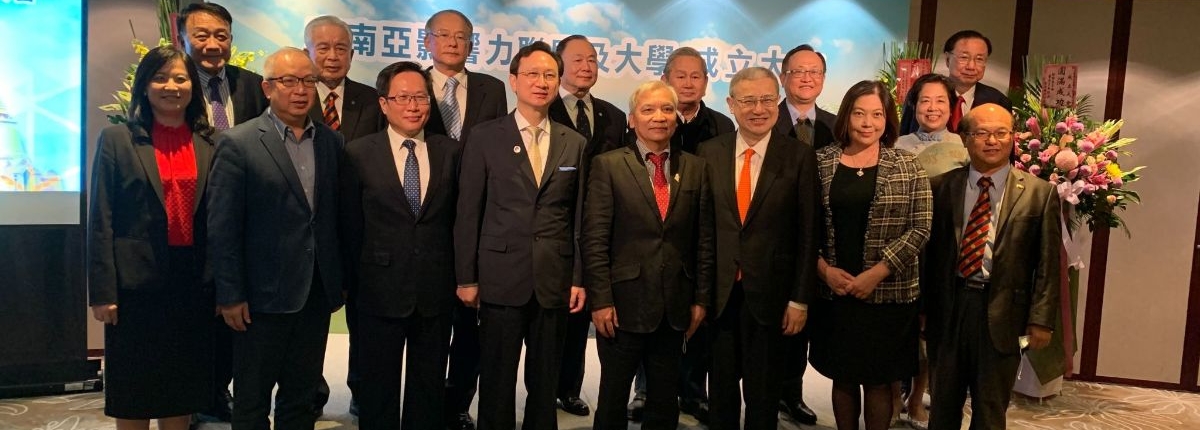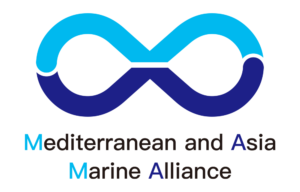MAMA Biweekly Newsletter – Jan. 27th 2021
The MAMA View –
Interviewing CY Huang (Founder at MAMA)

Introduction of CY Huang
He’s one of the key leaders in the Greater China investment banking industry with over 30 years of experience in investment and advisory. One of the most sought-after opinion leaders on issues impacting regional financial markets, recently interviewed by Financial Times.
Taiwan will continue to gain prominence in green energy development on the global stage in 2021
Q: Taiwan President Tsai Ing-Wen laid out plans to grow Taiwan’s renewable energy to become a major global player and a stable supplier of green energy, what is your opinion?
CY Huang:
It is clear that Taiwan will continue rapidly down the path of a clean energy future. So far, Taiwan is the most attractive offshore wind market in Asia, here are four main reasons why:
1. Environmental benefits: According to the “Global Offshore Wind Speeds Ranking” published by international consultancy company 4C Offshore, 16 of the world’s 20 most ideal wind sites are located in the Taiwan Strait. Inarguably, Taiwan’s offshore wind power development has significant potential.
2. Policy advantages: The government announced the 20% renewable electricity goal in 2017, which resulted in several more policy changes enabling the development of renewables including Renewable Energy Development Act, Feed-in-Tariff flexibility, Taiwan Renewable Energy Certification, and Power Purchase Agreements
3. Capital Advantages: Lacking experience in the industry, Taiwan is relying heavily on the participation of global players by making a firm policy commitment, offering attractive subsidized rates, and adopting new financing models.
4. Supply Chain strengths: Since the 1980s, technology has driven the economy in Taiwan and transformed the island into one of the world’s leading manufacturing hubs. Taiwan provides a number of uniquely competitive engineering and manufacturing resources so that all can benefit the offshore wind industry.
Q: Are there any benefits to strengthen Taiwan’s collaboration with Southeast Asian Countries when aiming to be an Asian Energy Hub?
CY Huang:
It’s Absolutely! In recent years, Taiwan’s government has adopted the “New Southbound Policy (NSP)” to deepen the connection with Southeast Asian countries through collaborating in science and technology, economy, and culture. In the post-pandemic era, Taiwan will make the best of the country’s R&D “soft power” to elevate the connection with Southeast Asia through its “warm power” in science and technology diplomacy. With Taiwan’s strong R&D capability and the active effort to engage in collaboration with local experts in SEA, we can predict that Taiwan and its NSP partners will create a robust green energy ecosystem in Asia.
Q: Talking about financing offshore wind in Taiwan, do you have any insights?
CY Huang:
It must be based on proven approaches to project finance from Northern Europe, capital innovation will be required to tailor these solutions for Taiwan. Financiers need to manage foreign exchange risk and to realize synergies between local and international banks that understand offshore wind. Furthermore, projects are required to source at least 20% of their debt from local banks: This is a major opportunity for local banks to learn from international collaborations, and to profit from lending to offshore wind projects and the emerging local supply chain. To deliver cost-effective finance on the scale required by the future Taiwanese offshore wind projects, equity and debt investors must Clearly define, estimate, mitigate and allocate risks including several ‘novel’ risks such as earthquakes and typhoons – which the industry has limited experience with.
Feel free to contact CY Haung about any questions relating to financing offshore wind in Taiwan.
Please email cyhuang@fccpartner.com
The Big Story –
Taiwan to turn into Asian Green Energy Hub
- Taiwan President Tsai Ing-Wen unveiled the government’s strategies to transform Taiwan into a renewable energy hub by boosting investment and production value in the late last year.
Tsai said the first focus is to continue to attract foreign investors to invest in Taiwan’s green energy development. So far, the accumulated investments in offshore wind energy development in Taiwan have surpassed the US $7 billion, and forecast to hit the US $34.48 billion by the end of 2025. - Since the first offshore wind farm – Formosa 1 – began commercial operation in Miaoli in 2019, many firms from Japan and South Korea have visited to learn how it is working. From 2020 to 2025, Taiwan expects an additional 14 offshore wind farms to be completed. In other words, the aggregate production capacity of Taiwan’s offshore wind energy sector totaled 128 megawatts as of July 2020 but is expected to hit 5.7 gigawatts by the end of 2025.
- To achieve such an ambitious goal, the government has plans to set up a market mechanism with financial institutions to allow sound green energy trading in Taiwan. Moreover, the government will try its best to build a comprehensive supply chain and strengthen competitiveness in a bid to help Taiwan firms take a share of the global market.
Southeast Asia Ocean Economy
Siemens Gamesa wins its largest onshore wind farm order in Vietnam
- Siemens Gamesa has secured its largest order to date in Vietnam for a 117 MW wind farm following a series of both onshore and nearshore projects announced in 2020.
- Vietnam’s Feed-in-Tariff (FiT) scheme has fuelled the country’s wind industry to an accelerated growth in the past two years. Riding on this industry boom, Siemens Gamesa has emerged as one of the leading renewables players in the country.
For more info: https://reurl.cc/ZQQ7D6
Vietnam to develop international standard ports
- The development of a synchronized seaport network would be essential to meet the burgeoning export demand and keep pace with the country’s socio-economic development
- The plan seeks to improve the efficiency of investment in ports, promote marine infrastructure and connectivity with other transport infrastructure and reduce logistics costs. It targets increasing annual cargo capacity to 1.14-1.42 billion tonnes and passenger capacity to 10.1-10.3 million by 2030
For more info: https://reurl.cc/1ggoGp
What’s Driving Vietnam’s Renewable Energy Boom?
- The primary mover is Vietnam’s explosive rate of growth. This rapid growth is driving up energy consumption at an extraordinary rate.
- The government of Vietnam is aware that the country will require large capital inflows to continue its rapid economic growth.
For more info: https://reurl.cc/raa19b
Indonesia targeted to become the world’s largest vaname shrimp producer
- Maritime Affairs and Fisheries (KKP) targets to make Indonesia the world’s largest vaname shrimp producer by increasing production from currently below one million tons to 16 million tons annually. To this end, Indonesia must begin developing new shrimp ponds spanning an area of 200 thousand hectares until 2024.
For more info: https://reurl.cc/7yy3nd
The fishery sector of Vietnam carries out electronic traceability
- The paper-based records of traceability for catching fishery products on the sea has taken time and not ensured the accuracy during filling information for the traceability, including region and volume of catching fish, also it’s difficult to complete the documents in the bad weather. In addition, record-keeping is also not convenient.
- The electronic fishing diary and the traceability software will improve the accuracy and convenience in completing information about traceability for seafood products and managing that information traceability of fishery products according to the needs of the market.
For more info: https://reurl.cc/mqqvX7
Taiwan Ocean Economy
National ocean current energy generating trail field and trail harbor are selected in Taitung to test commercial ocean current generating sets
- National Academy of Marine Research with the R&D team of National Sun Yat-sen University selected Fugang Fishery Harbor and Hsin-Kang Fishery Harbor in Taitung to be the national ocean current trial field since the Kuroshio Current flows past eastern Taiwan all year round with great potential of ocean current energy generation.
- The R&D team upgraded the ocean current generating set from providing 50kW to 400kW and did the field experiment last year.
- Aiming at finishing researching and developing commercial ocean current generating sets that provides 2 MegaWatt per day by 2025
CDPQ, Cathay PE join Ørsted in 605-MW wind project off Taiwan
- Caisse de dеpоt et placement du Quеbec (CDPQ) and Taiwanese private equity fund Cathay PE will jointly acquire a 50% interest in the 605-MW Greater Changhua 1 offshore wind project from Ørsted A/S (CPH: ORSTED).
- The total value of the transaction amounts to TWD 75 billion (USD 2.66bn/EUR 2.17bn)
- The stake buy represents the first time the Canadian institutional fund manager invests in an offshore wind farm in the Asia Pacific.
The new vessel series 2038TEU by Wan Hai Lines LTD will be prioritized in the speed route between China, Singapore, and Malaysia.
- The new vessel series 2038TEU by Wan Hai Lines LTD is certified with Smart Ship Notation. With the built-in smart system and monitoring system to collect sailing data and ship equipment operating conditions to enhance sailing safety management.
- According to Wan Hai Lines LTD., the need for cabins is increasing substantially in the Asia route, and the owner is facing the problems of port congestion and delaying schedules. The new series of vessels will be prioritized in the speed route between China, Singapore, and Malaysia.
M&A and Investment News
- Greenbacker Capital invests in Clear Energy Hydro
- Edison to take full control of Italian wind co from F2i
- AqualisBraemar to buy fellow renewables consultancy LOC Group
- Ocean Power Technologies to sell shares to Aspire Capital Fund
- CorPower Ocean clinches EUR 9m to back wave projects

